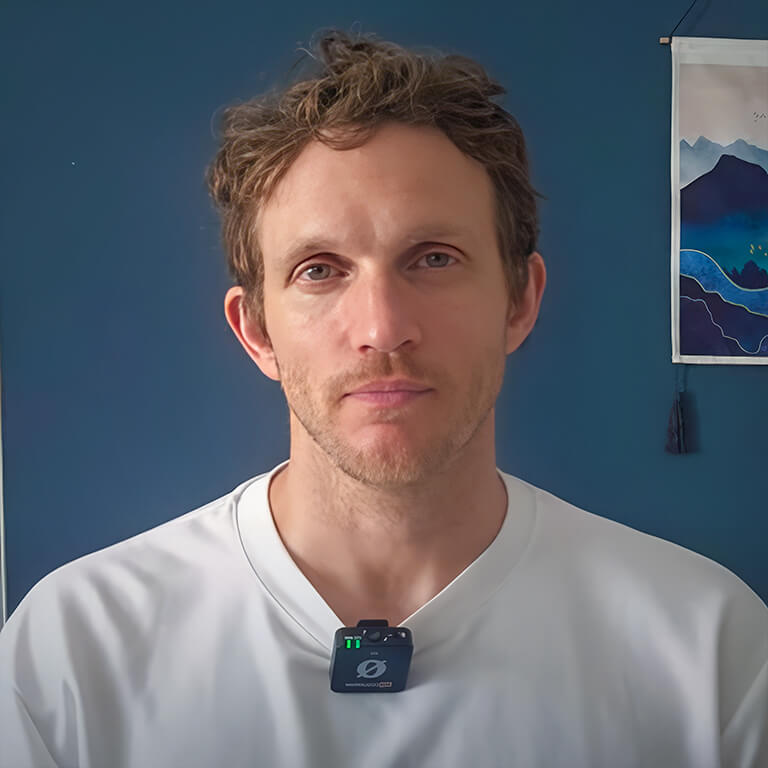
How to Feel Better on Bad Days: What I Do When I’m Not Feeling Great
You’re not going to feel good every day. In fact, there are plenty of days when things just don’t feel right. In this blog, I’m going to walk you through exactly how to feel better on bad days—with real, practical tools that I personally use when I’m not at my best.
Even on the rough days, there’s one important rule I follow that helps prevent me from spiraling into despair. So if you’re having a tough day, or if you just want to be prepared for the next one, keep reading. These simple but powerful techniques can really help.
Start with a Daily Streak
The first thing I do—and what I’m doing right now—is create content daily. This might seem simple, but the act of committing to something every day creates momentum. It puts you on a streak.
When you’re on a streak, you’re more likely to continue than to quit. Let me give you an example. Imagine you commit to speaking to one new person a day for 100 days. If you’ve done it for 40 days in a row, skipping day 41 feels like breaking something valuable. That streak keeps you going.
The takeaway here is to commit to something every single day, especially something that helps your growth. It could be:
-
Filming a video
-
Going to the gym
-
Writing a journal entry
-
Reading a book
-
Recording a podcast
Whatever it is, the consistency matters. I once had a nine-month running streak. Even when my legs ached, I kept going because I didn’t want to lose the progress I had built. A daily streak not only helps you work toward your goals, it also gives you a reason to get up and keep going on hard days.
Stop Ruminating and Get Busy
The second way I’ve learned how to feel better on bad days is to limit the time I spend ruminating. Most negative emotions are temporary. If I’m feeling down or anxious, I don’t obsess over it. Instead, I get busy.
I’ll:
-
Talk to a friend
-
Call a family member
-
Walk my dog
-
Stick to my daily routine
The less time I spend stuck in my own head, the better I tend to feel. Even something that seems small can give your mind a break and offer clarity later in the day.
Try an Emotional Clearance Exercise
This is one of my favorite and most powerful tools for emotional regulation. It’s not traditional meditation. I find that while meditation is helpful, it often just distracts you. The problem is still there afterward.
This method is called an emotional clearance exercise, and it works differently. It helps you find where you feel emotion in your body and release it intentionally.
Level One: Body Awareness and Color Visualization
-
Close your eyes and ask, “Where do I feel tension in my body?”
-
Identify the place—for me, it’s usually my jaw.
-
Assign it a color in your mind.
-
Focus on that color and watch it shift or fade until it turns white.
This helps your body release trapped emotions and allows them to process.
Level Two: Go Back to the First Time
Take it a step further:
-
Ask, “When did I first feel like this?”
-
Find the memory if you can.
-
Assign the memory a color, focus on it, and let it pass through until it turns white.
Level Three: Full Emotional Clearance
This one goes deeper. Here’s what you do:
-
Focus on the tension in your body.
-
Let your body naturally move into a posture that represents the feeling.
-
Hold that posture and ask, “Why do I feel like this?” or “When did this first happen?”
-
Let the memory surface, assign it a color, and breathe through it until it turns white.
Always breathe through your nose. Nasal breathing calms your nervous system and helps your body feel safe enough to let go of the tension.
You can also give your emotion a rating out of 10 before starting the process. For example, “The tension in my jaw is a 7 out of 10.” After the exercise, check in again. If it’s still high, repeat the process.
Freestyle Journaling for Clarity
If you’re still not sure how to feel better on bad days, another method I use is freestyle journaling. Just sit down and write whatever comes to mind. Don’t filter it. You can delete it afterward or throw it away—no one has to see it.
This is an emotional release tool. Once you get your thoughts out on paper, you often feel a weight lift.
You can level up journaling by turning your emotions into something creative—write a short story, draw, or even record a voice memo. Take the pain you’re feeling and express it creatively. That’s a powerful form of self-understanding.
Cold Showers and Ice Baths Can Help
Another surprising tool I’ve found helpful is cold exposure. A cold shower or an ice bath can dramatically shift how you feel emotionally.
When I start my day with an ice bath, I tend not to feel as anxious or emotionally heavy. Interestingly, I turned off my ice bath for a few days because I was away. I didn’t start it back up right away, and I noticed a kind of background anxiety building in my jaw again.
That subtle shift reminded me how powerful this tool really is. It doesn’t “solve” the emotion, but it helps regulate the nervous system. Sometimes, preventing emotional tension before it starts is just as important as treating it when it shows up.
Distraction Is Not Always a Bad Thing
There’s a common idea that distraction is a negative coping method. But I disagree. Distraction can be powerful when used intentionally. If something makes you feel better, that in itself has value.
If you use distraction long enough to move through a tough emotion, you’ve succeeded. Not everything has to be deep emotional work. Sometimes watching a movie, going for a walk, or doing something fun can help more than sitting and thinking about how bad you feel.
That said, if you find yourself avoiding real issues, then it’s important to strike a balance. But don’t write off distraction as a tool for managing how to feel better on bad days.
Explore Professional Help
If the tools above aren’t giving you relief, or if you’re feeling persistently low, consider reaching out to a therapist. Two approaches I recommend are:
-
Cognitive Behavioral Therapy (CBT): This is great if your issue seems to be in your thinking patterns. It helps you understand and shift unhelpful thoughts.
-
EMDR Therapy: This stands for Eye Movement Desensitization and Reprocessing. It’s a body-based therapy and is especially helpful if your distress is stored in your body as tension, pain, or discomfort.
Personally, I’ve experienced post-traumatic stress disorder after a serious car accident when I was 19. In my early twenties, I faced severe mental health issues. But I managed to recover without relying on medication like beta blockers or common anti-anxiety pills.
That’s why I feel confident recommending these therapies. They’re grounded in real results, and for me, they made a real difference.
Build a Personal Support System
Another way I’ve learned how to feel better on bad days is by surrounding myself with a support network of professionals. These aren’t just people I go to when things are bad—they’re part of my regular routine.
Right now, my support system includes:
-
A personal trainer for physical health
-
A physiotherapist for old injuries
-
A new vocal coach I just hired
What’s great about having these people in your life is that their roles naturally include a supportive element. A good coach, for example, will always ask, “How have you been this week?” That simple question gives you an opening to talk about what’s on your mind.
Even if their role isn’t about therapy, just having someone listen, reflect, and offer a fresh perspective can help you feel better quickly.
Funny Story About Coaching That Went Wrong
I want to share something that still makes me laugh. The first time I ever worked with a vocal coach was eight years ago. In our first session, she asked me to sing loudly and fully commit.
I told her I had never sung before, but she insisted. So I gave it everything I had.
Her response? “Well, you’re tone-deaf.”
That was it. No encouragement. No tips. Just a flat-out judgment. Obviously, I didn’t go back.
Instead, I decided to work on my voice myself, and I’ve come a long way since then. But just recently, I decided I wanted more structured help, so I started with a new vocal coach. Thankfully, this one is supportive, focused on posture and breath, and the experience is already helping.
This story is a reminder: the right support makes all the difference. Don’t give up just because your first try wasn’t the right fit.
Weakness in One Area Shows Up in Others
I’m also learning how to swim properly—not just staying afloat, but learning real technique. And interestingly, I’m making the same breathing mistakes in swimming that I am in voice training.
This made me realize something. When we struggle with something in one area of life, it often shows up in other areas too. That’s why when you work on one weakness—like breath control—it can improve multiple parts of your life.
Take Action Even If You Don’t Feel Like It
The real message of this post is this: Take action. Especially on the days when you feel low. Whether that means:
-
Booking a session with a therapist
-
Hiring a coach
-
Joining a course
-
Calling a friend
-
Going for a walk
-
Doing an emotional clearance
-
Journaling
Taking action is how you interrupt the cycle of negative emotion. You don’t have to feel like it to do it. Just the act of doing something positive sends a signal to your mind that you’re not powerless.
Be Open to Exploring What Works for You
One of the final things I want to leave you with is this: Be open to exploration. When I started with my new vocal coach, I told him I had specific goals for how I want to speak. But I also said that I understand the process is an exploration. His response was simple: “That’s exactly true.”
It’s the same for you. If you’re looking for how to feel better on bad days, you’re going to have to explore a little. Try something new. Try something you haven’t done before. The truth is, you won’t know what works for you until you try it.
Some of the tools I’ve shared here might seem unusual—like assigning colors to emotions or breathing through tension. But the reason I can talk about them is because I’ve lived them. I’ve gone through depression. I’ve experienced trauma. And I’ve spent years trying things out until I found what worked.
Find the Root of the Problem
Sometimes the hardest part of feeling bad is not knowing why. You may feel off but not be able to pinpoint the reason. That’s where tools like journaling or emotional clearance come in.
Often I’ll ask myself, “What exactly is the problem?” I’ll go through possibilities:
-
Is it stress about a project?
-
Did I not sleep enough?
-
Is there something unresolved I haven’t faced?
When you stumble upon the right one, your body tells you. You feel relief, you feel clarity. That’s why self-inquiry can be such a powerful practice. It gets you closer to the root of your emotional discomfort.
Final Thoughts on How to Feel Better on Bad Days
Bad days are going to happen. But you don’t have to sit in them without options. You now have a list of real, practical tools to try:
-
Commit to a daily streak
-
Stay busy and avoid ruminating
-
Try emotional clearance
-
Freestyle journal
-
Use cold exposure like ice baths
-
Use distraction when needed
-
Reach out to a therapist
-
Build a professional support team
-
Be open to creative outlets
-
Take action, even when you don’t feel like it
All of these are things I personally use. They’ve helped me manage anxiety, process trauma, and ultimately feel better when I’m struggling. The goal isn’t perfection. The goal is progress.
If one of these tools works for you, that’s great. If it doesn’t, try another. This process is about finding your own rhythm and learning how to support yourself, no matter what’s going on.
If you only take one thing away from this post, let it be this: You’re not powerless. There are things you can do today that will help you feel better. Start small, start now, and stay open to learning what helps you.
Written by Gary Gunn
I coach men to build real self-confidence so they can meet, attract and date the women they truly desire.
My coaching is practical, real-world and focused on lasting behavioural change.
Learn More About My Coaching
👉 My Books



















